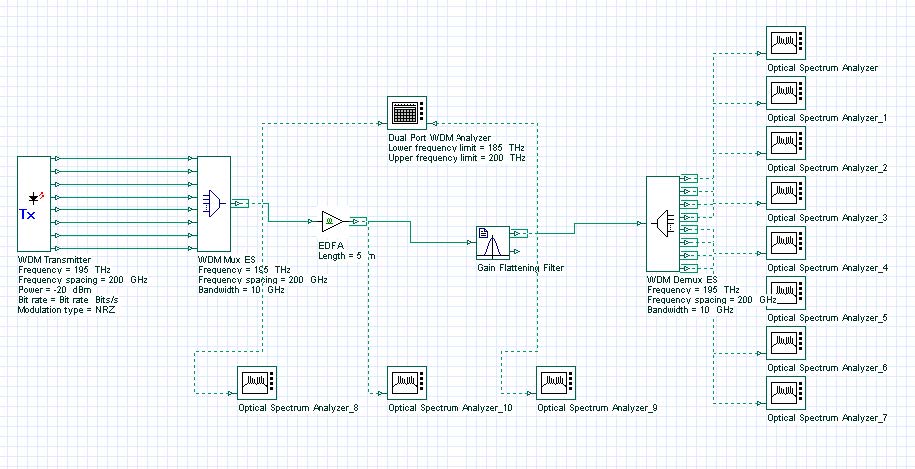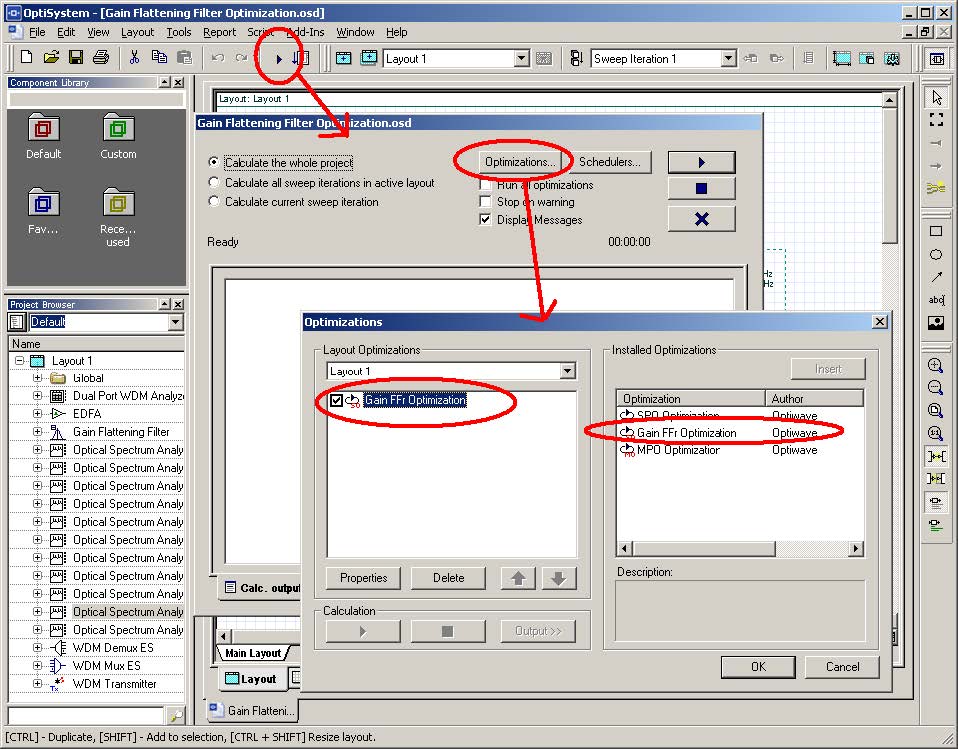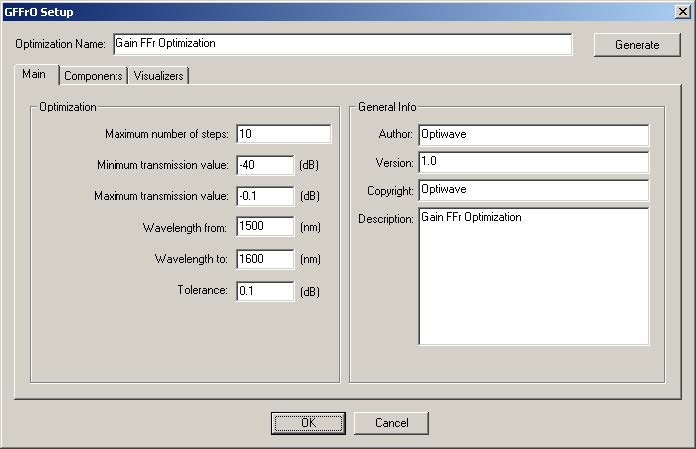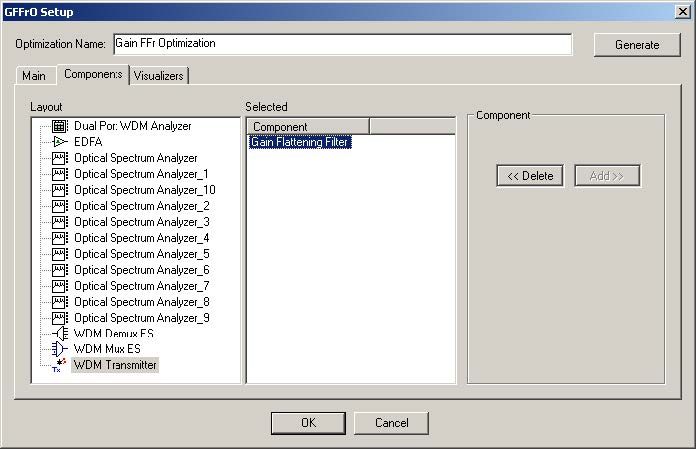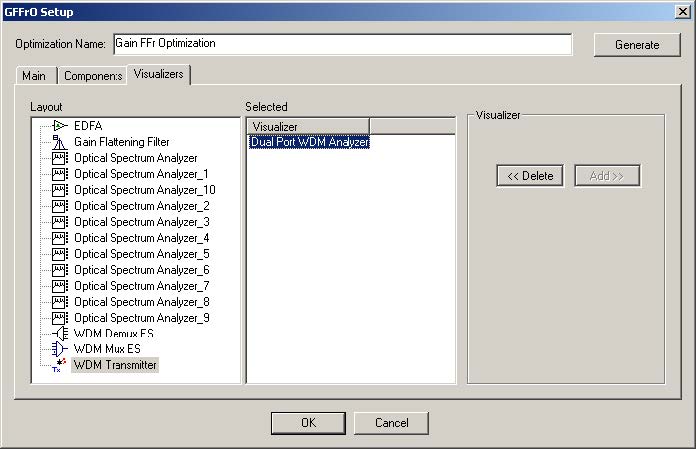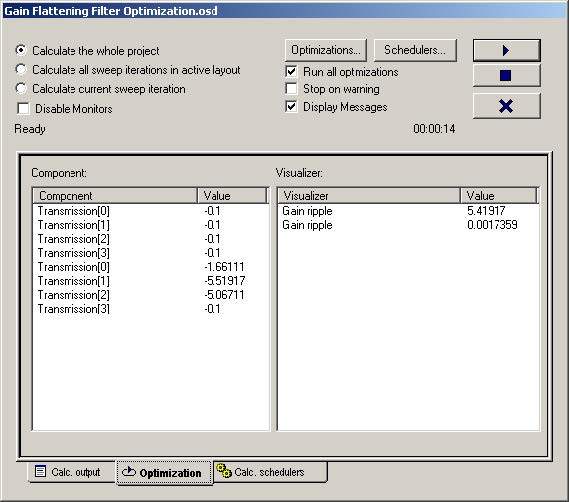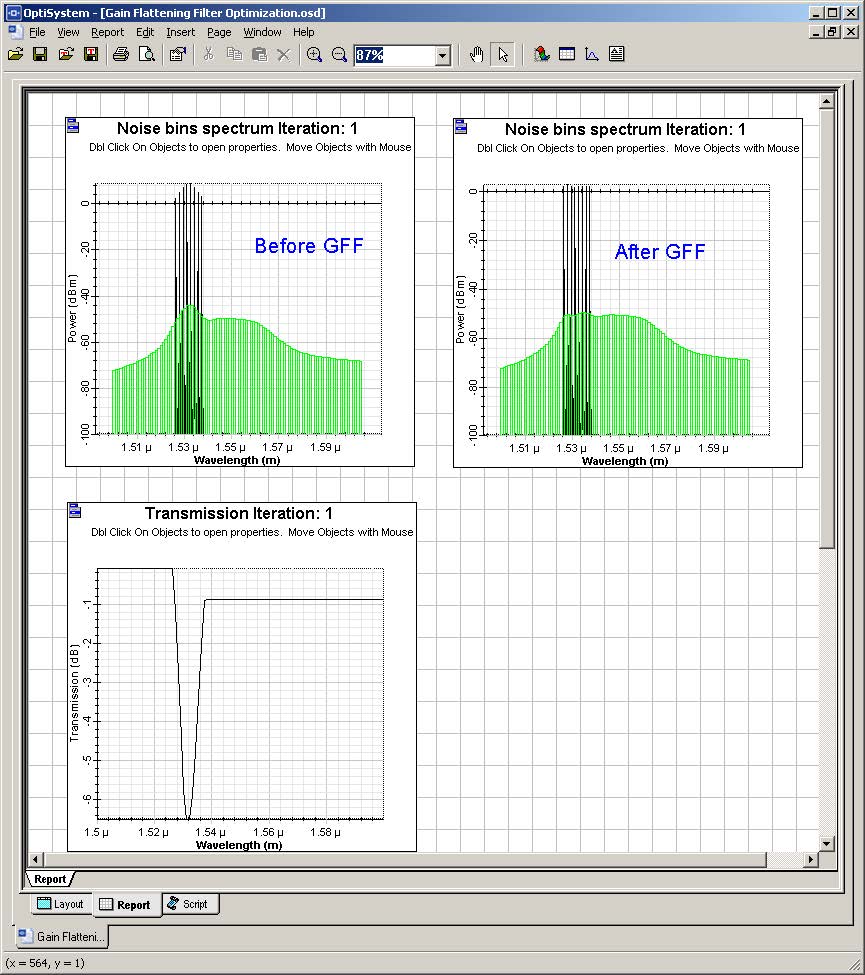EDFAs have a wavelength-dependent gain; i.e., some wavelengths are amplified more than others. A gain flattening filter restores all wavelengths to approximately the same intensity. Project Gain Flattening Filter Optimization.osd demonstrates the gain flattening filter optimization engine that is included with OptiSystem.
The system layout is presented in Figure 1. The WDM Transmitter generates eight channels from 195 THz to 196.4 THz, with power of -20 dBm per channel. The Gain Flattening Filter component is placed after the EDFA and it will equalize the amplifier gain.
Figure 1: System layout of the fiber amplifier
Figure 2 shows the steps to access OptiSystem optimization dialog box.
Figure 2: Accessing the optimizations
Figure 3 shows the main parameters of the optimization. The optimization will run 10 times, targeting a gain ripple of 0.1 dB from 1500 to 1600 nm. The minimum transmission value for the filter is -40 dB and the maximum value is -0.1 dB. The transmission values of the filter will be optimized at the user defined frequencies defined in the filter. The components tab should have the filter component selected and the visualizers tab should have the dual port analyzer selected.
In order to run the optimization, simply calculate the project. Make sure the ‘Run all optimizations’ check box is enabled. During the calculation the user can click on the Optimization tab and visualize the progress of the optimizations (Figure 4).
Figure 3: Optimization main parameters
Figure 4: Optimizing the filter
In this particular project we have the signal before and after the gain flattening filter available in the report page (Figure 5). The shape of the filter is also available in the report. The user can also visualize the overall gain of the amplifier using the WDM analyzer and the value of the filter transmission values by looking at the filter ‘Transmission’ parameters.
Figure 5: Signals before and after the filter


